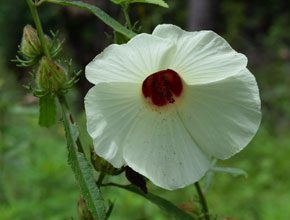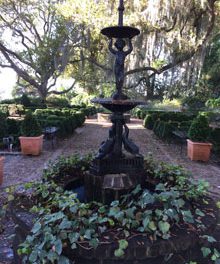 When designing a garden we want to look at the mature size of plants. It doesn’t do to have a sprawling tall plant at the front of a border or under a low window. Choosing the right plant for the right place is all about form, height, width, seasonal interest, and ecological services.
When designing a garden we want to look at the mature size of plants. It doesn’t do to have a sprawling tall plant at the front of a border or under a low window. Choosing the right plant for the right place is all about form, height, width, seasonal interest, and ecological services.
When I first studied landscape design we learned that the most important consideration in choosing plants is form. You want a plant to fit in a composition, not to dominate it. We should want low maintenance plants that don’t have to be cut back monthly. Knowing the mature size and height is critical in design. Place taller specimens in the back of a bed viewed from the front or sides, and put them in the middle of beds viewed from all sides. Florae are chosen for their function in the garden as well as form. Plants which provide shade, shelter, and pollinator services add an interesting mix of wildlife activity to the garden. Here are a few native perennials that are tall, beautiful, and great for attracting beneficial insects and birds.
Lobelia cardinalis, the scarlet flowers of Lobelias, really attract the hummingbirds and provide a delightful drink of nectar. This lofty hummingbird and butterfly magnet is a perennial with basal offshoots whose stems can reach 6-8 feet. Cardinal flower enjoys growing in moist soil. Seeds may lie dormant until some type of disturbance wakes them up. I got a couple of “volunteers” growing in pots of Indian grass and Baptisia that I recently purchased from a native plant sale.
Verbesina is a native genus that has a white form Verbesina virginica called “frost weed” or “White crown beard,” and V. occidentalis “yellow wingstem” or “Southern flat-seed sunflower” is the yellow form. Both have attractive fall flowers and are found on the edge of woods, or grown for pollen, nectar, and seeds in natural areas and beds. Growing from fibrous, fleshy roots, the plants are tall and graceful composites with small flower heads growing in clusters on the tops of the 6-9’ stems.
Swamp sunflower, a fall favorite, is about to grace roadsides throughout the South. Helianthus angustifolia prefers ditches and moist soils, but can grow well over 6’ in regular garden soil. It probably should be divided every few years, because it is an aggressive spreader. The stems can be cut back in midsummer to produce a bushier habit and more blooms. The yellow ray flowers and brown eyes are so cheerful and are borne on the ends of lanky stems. The leaves are narrow and can be 8 inches long. It produces a nutlet that is eaten by many songbirds.
Hibiscus muscheutos is a hardy hibiscus which has a woody stalk up to 6’ tall. Found in freshwater and brackish swamps, forest swamp edges, and roadside ditches. The petals may be white or pink but the centers are a dark purplish red with prominent pale yellow stamens.







